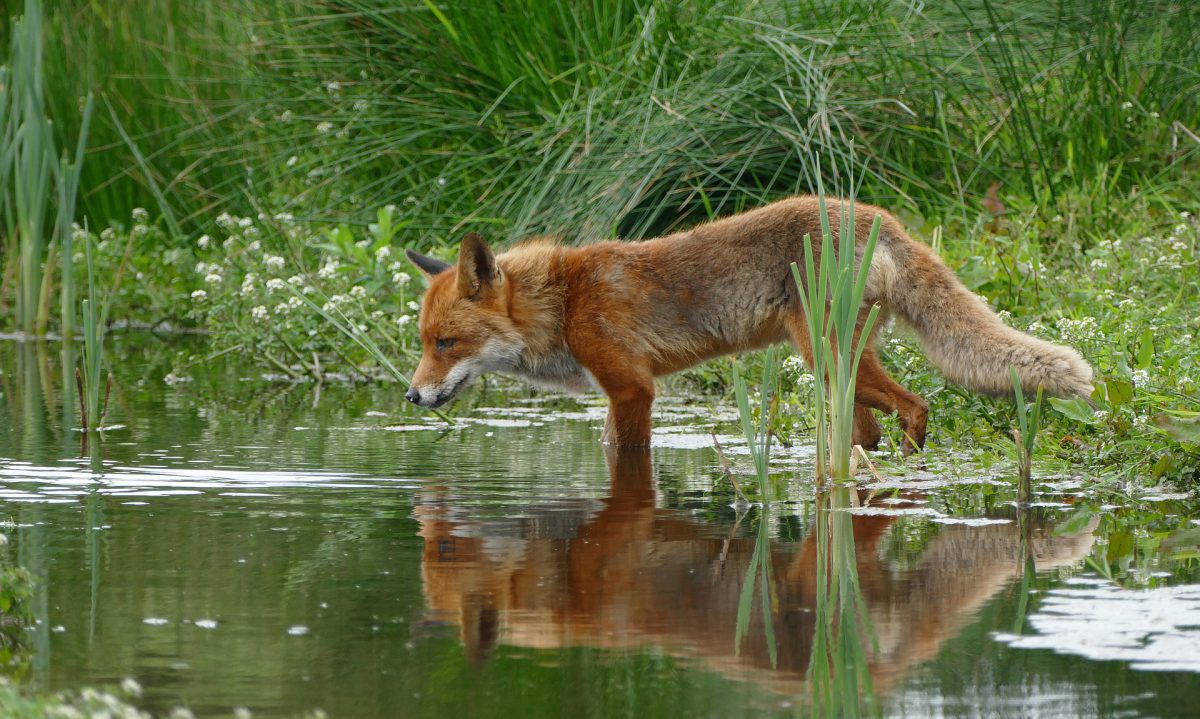- info@sirhowyhillwoodlands.co.uk
- Thomas Ellis Way, Tredegar NP22 4QF
- About Us
- Get involved
- Visit Us
Visit Tredegar & our Woodlands
Come and visit us!
Sirhowy Hill Woodland
Thomas Ellis Way
Tredegar
Blaenau Gwent
NP22 4QF - Wildlife
- Woodland Shop
Latest and greatest products, direct from our
Woodland Shop
Sourced from the Woodlands and the local community.
You have
item(s) in your bag

Scientific name: Vulpes vulpes
Fox
The fox has reddish-brown fur, a white chest and a bushy, white-tipped tail, called a brush. Its nose and ears are pointed. Foxes are widespread and quite common throughout Britain, and a surprising number live in towns.
They are active at dusk and during the night, searching alone for food. However, they tend to live in family groups of one dog, one vixen and her cubs and a few female helpers from previous litters.
The family has several lairs and one or more breeding dens, or earths, within their territory. Females give birth to four to seven cubs between March and May.
You may be lucky enough to see a fox, but they are shy creatures. Instead, look for evidence of their presence, such as tracks and droppings.
Although they can be quite variable in colour they are easily recognised by the large and conspicuous oval and kidney mark and a W-shaped mark near the outer edge of the forewings. There is a dark melanic form f. aethiops which is more frequent in the north.
How to identify the Fox?
They are scavengers and eat almost anything they can find, including insects, earthworms, fruit, berries, birds, small mammals, carrion and scraps left by humans.
When will I see a fox?
At dusk and night at anytime of year.
Where will I see a Fox?
Throughout the garden searching for food. Look for tracks, droppings, overturned bins and chewed remains, which show a fox has paid you a visit. Foxes mark their territories with greyish droppings in prominent places.

Click to view more
Statistics
Scientific Name
Vulpes vulpes
Protection
Protected in the UK under the Wildlife and Countryside Act, 1981.
Size
Head and body about 90 cm
Tail about 50 cm
Stands 40 cm high
Weight: up to 10 kg
Population
Common
Habitat
The fox is a remarkably adaptable and successful animal found, where food is plentiful, in almost every habitat.

Other Wildlife
What does a Fox eat?







